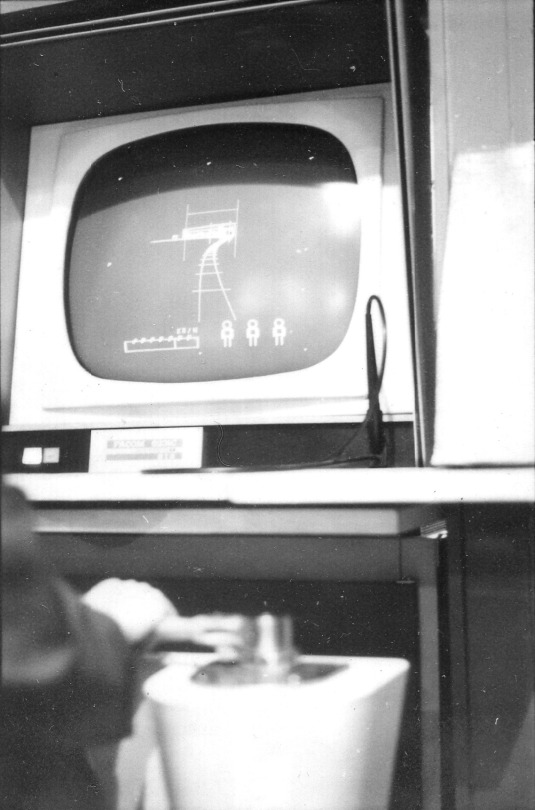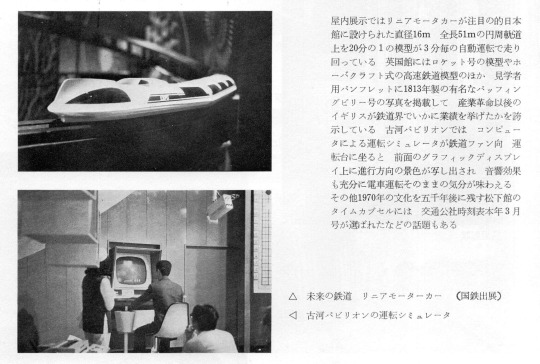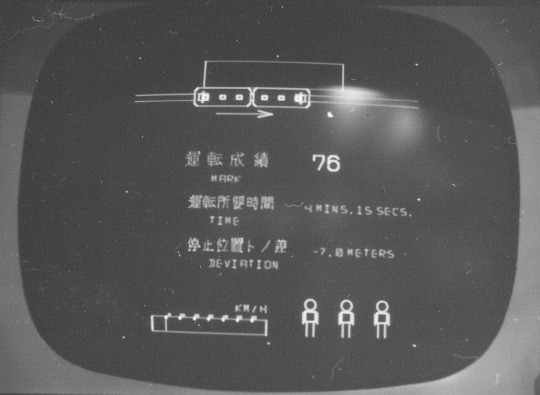#Training simulations
Explore tagged Tumblr posts
Text
i went to the aquarium the other week and hand to god every single seahorse was pregnant. it was like ao3 in there
#the aquarium also costs FIFTY CANADIAN DOLLARS it is not worth it#you know what is worth it? the toronto railway museum across the street. $14 and there's a train driving simulator#this is a pointless text post#greatest (s)hits
35K notes
·
View notes
Text
Exploring the Potential of Augmented Reality in Education
Augmented and Virtual Reality (AR VR) Software
Explore the world of Augmented and Virtual Reality (AR VR) software, its evolution, applications, benefits, and future trends in this comprehensive guide.
Introduction
Augmented Reality (AR) and Virtual Reality (VR) have revolutionized the way we interact with technology, offering immersive experiences that blend the digital and physical worlds seamlessly. In this article, we delve into the world of AR VR software, exploring its evolution, types, features, industries, benefits, challenges, and future trends.
Evolution of AR VR Software
AR and VR technologies have come a long way since their inception. From early experiments to sophisticated applications, the evolution of AR VR software has been marked by significant technological advancements. Innovations in hardware and software have propelled AR VR from niche domains to mainstream adoption across various industries.
Types of AR VR Software
AR VR software encompasses a diverse range of applications tailored to different needs and industries. Consumer-oriented AR VR apps cater to entertainment, gaming, and social experiences, while enterprise solutions focus on training, simulation, and visualization tools for businesses.
Key Features and Functions
At the core of AR VR software are its immersive experiences and interactive capabilities. Users can explore virtual environments, manipulate objects, and engage with digital content in real-time, blurring the lines between the physical and virtual worlds.
Industries Utilizing AR VR Software
AR VR technology finds applications in a wide array of industries, including gaming, healthcare, education, and architecture. From immersive gaming experiences to surgical simulations, AR VR software is transforming how we learn, work, and interact with information.
Benefits of AR VR Software
The adoption of AR VR software brings forth a multitude of benefits. In education, students can engage in immersive learning experiences, while businesses leverage VR for training simulations and product visualization. Enhanced customer engagement and experiential marketing further amplify the impact of AR VR technology.
Challenges and Limitations
Despite its potential, AR VR software faces several challenges and limitations. High hardware requirements, user comfort issues, and content quality concerns pose barriers to widespread adoption. Addressing these challenges is crucial for unlocking the full potential of AR VR technology.
Future Trends in AR VR Software
Looking ahead, the future of AR VR software is promising. Integration with artificial intelligence (AI) and the Internet of Things (IoT) will enable new applications and experiences. Advancements in hardware, such as lightweight headsets and haptic feedback devices, will further enhance the immersive capabilities of AR VR technology.
Conclusion
Augmented and Virtual Reality (AR VR) software represents a paradigm shift in how we interact with digital content and the world around us. As technology continues to evolve, AR VR software will play an increasingly integral role in various industries, shaping the way we learn, work, and communicate.
FAQs
1. What is the difference between AR and VR?
2. How does AR VR technology enhance training simulations?
3. Which industries benefit the most from AR VR software?
4. What are the primary challenges associated with AR VR adoption?
5. What advancements can we expect in AR VR hardware?
#Augmented Reality#Virtual Reality#AR VR technology#Immersive experiences#Training simulations#Gaming industry#Healthcare applications#Educational technology#Enterprise solutions#AI integration
0 notes
Link
Healthy Mariners Amidst Geopolitics
0 notes
Text
Delving further into my headcanon that Spinner collects copies of vintage media (i.e. today's media that's become vintage by MHA's timeline), I like the idea that he sometimes shows the Vanguard his old films.
After binging the HTTYD trilogy one night, I imagine this happened at least once after the fact:
Touya: Thank you for nothing, you useless reptile.
Spinner: *...you know, I guess I did show him a movie where a misunderstood kid was eventually accepted by his estranged father, so he can have this one...* Yeah, yeah, good one, asshole. Didja like the movie?
Touya: *through his teeth* Yes...
#my hero academia#dabi#spinner#how to train your dragon#touya todoroki#shuichi iguchi#boku no hero academia#bnha#mha#ambush simulation#alternate universe#httyd#shitpost
105 notes
·
View notes
Text
The Justice League, on their way back from a deep space mission that was incredibly successful, received a distress signal from a galaxy they’re passing through.
As they investigate, they learn that a colony of a planet has been wiped out. Completely.
Slowly they piece together that there is some being out there that had been terrorizing planets, starting with colonies and then eventually going after larger settlements and home planets.
The League also learns they are not the first people to learn of this foe, or try to come up with a solution to stop them.
The colony they are inspecting has researchers on it that had fled or escaped from other planets where they piled together all they knew about their enemy, and in an attempt to sift through the mountains of data they had collected, created a device.
If a person was connected to the device, they would mentally experience the number of years required to process the data and come up with an attack plan in seconds. What the researchers had needed was time, so they created it.
As the League pieces this together, Superman sees that there is a being approaching the remnants of the colony and the defense system alerts the “remaining colonists” of the imminent threat. Their failsafe boots up and takes the nearest person, in this case, Batman, who had been studying some of its programming, and activates.
The rest of the team didn’t have a chance to react before Batman blinks and is in motion, setting up machines and dictating code without lifting a finger.
There is no fight, because after the two seconds Bruce was in the machine he was a flurry of motion and the enemy was contained.
They ask him how long had passed for him in the machine. It takes him a full minute to respond.
“150 years.”
#batman#bruce wayne#justice league#batfamily#batfam#i can’t decide how bruce would react to being alone in his own head for 150 years but no matter what it’s bad#because sure he trained with the loa in isolation but not for longer than the average lifespan nothing can prepare you#so either he comes back and is completely silent because he spent the last 20 years not even “talking aloud’’ to himself#or we finally get some sort of emotive bruce. one who finally realized that he needs people and is desperate not to be alone again#when he gets home? and sees his kids? my god that man should cry.#because they were what kept him going through those 2 seconds and 1314000 hours - that he would see them again#and in those years there must have been downtime (if it was like a mental simulation) where he could over analyze his relationships with his#kids and the watchtower defenses and his romantic relationships. and mentally hack the equipment holding him to let him write code in his#head and then program the defenses in real time for the moment he came out of “stasis”#let this deeply traumatized man have too much time on his hands and the isolation he thinks he needs and have it fuck him up irreparably#(based loosely on miles o’brien from ds9 and outer wilds for the mental prison and noncon time loop)#one things for sure and two for certain he lobbys against solitary confinement
97 notes
·
View notes
Text
Do y’all think Barbara and Jason ever had a book club, something with just them in the back of the library? Or that Stephanie and Alfred ever talked about theater? Maybe Tim taught Cassandra photography so she could capture the things only she could see. Maybe Alfred showed Barbara how to make those superhero plushies. Maybe Damian and Bruce bonded over bird watching, or Cass and Dick finally started getting along over acrobatics, and Jason and Duke do writing workshops together? Perhaps Cass and Barbara took a dance class? Do Kate and Jason go shooting together? Maybe Tim showed Barbara how to skate in a wheelchair? Do Damian and Duke go to paleontology exhibits?
Just the Batfamily bonding over their interests.
#except let’s be real here neither Cass nor Barbara would ever take a class#Barbara did however watch a YouTube video and design a training simulation for the both of them to use#batman#batfamily#batfam#bruce wayne#stephanie brown#barbara gordon#cassandra cain#tim drake#damian wayne#jason todd#dick grayson#kate kane#alfred pennyworth
70 notes
·
View notes
Text
I may have been hyper focused on doing this for 2 hours..

Uhhh.. Emmet and Ingo.. Hello?

#pokemon#subway boss emmet#trains#railroad#pokemon ingo#subway boss ingo#subway bosses#next thing i may end up buying a train simulator (I almost did that last year)
28 notes
·
View notes
Text
A train simulation at the heart of Japan's videogame production genesis

As the great videogame historian Florent Gorges explains in a recent video, one of the most beguiling developments in Japanese videogame history research comes to us from an unlikely source. Twitter user and train aficionado @yota8nsx reminisces about an episode of his childhood, namely his visit to Expo '70 in Osaka, describing a particularly captivating train simulation game playable at the Furukawa Pavilion and whose implications, if properly understood, make this one of the most important findings in this field of research.

A flyer illustration of the seven story pagoda building created specifically for the occasion, a traditional architectural reference that contrasted with the latest high-tech creations hosted within it.
Late last year, @yota8nsx uncovered pictures of the exhibit captured from a speciality magazine that show this early simulation game appearing to use vector graphics to depict a train track, as well as some custom-made mechanic train cab control levers. He captions the pictures with his memories of how the program functioned:
Well, there was a limit to what could be done given the capabilities of computers in the 1970s. This is an article on page 61 of the July 1970 issue of Railway Pictorial magazine and an image taken by an acquaintance of mine. (...)
It was over 54 years ago, so my memory is a bit hazy, but I think when I accelerated, I would fall backwards, and when I braked, I would fall forwards. There are about three different angles of reclining, and each was scored based on how comfortable the ride was. If I had gotten 90 points out of 100, I would have received a medal. In the picture, it's 76 points.

After performing some complementary research I was able to find that the program ran on an IDI Input-Output Machine, a computer developed in the mid 60s by New York-based company Information Displays, Inc. The IDIIOM is widely regarded as the first commercial CADD platform with powerful vector graphics capabilities and a light pen interface. Another game known to have been developed using the same machine is the Daly CP (Chess Program), one of the earliest GUI-based chess games, authored in 1969 by NASA researcher electrical engineer Chris Daly.


However, there are reasons to believe that this was either an adapted Japanese version of the system; or that it was in some manner connected to another terminal, as evidenced by code shown below the screen which appears to read Facom, followed by an alphanumeric code. As you may know, this was the name for Fujitsu's earliest computer line. Could this subtle hint refer to a separate terminal in which the actual game code was created or, perhaps even, running?

Despite the scarce information, namely the complete absence of any details concerning the authors of this magnificent experiment, there is sufficient documentation to establish this as one of the earliest known games ever to be created in Japan. Certainly, its existence is far better established than many of the often cited, Japanese university computer lab game creations from students of the 1960s.
The importance of this finding cannot be overstated, especially if one is to consider that the images hint at the distinct possibility that the game used vector graphics to represent a moving 3D train track. This some three years before Maze War, hitherto the first known game to have used three-dimensional visuals.
Disappointingly, the program itself is certain to have vanished altogether and there are hardly any leads that can explored to shed further light on this singular creation. I, for one, feel indebted to this old Japanese railfan for his invaluable contribution to what other information existed on this subject.
- Update (26/03)
The venerable Matt Sephton has pointed the way for additional information concerning this game as well as the Osaka Expo of 1970.
Some of these resources, including Classic Videogame Station, refer to this game as 電車の運転テス, or Densha no Unten Tesuto - literally Train Driving Test. Some additional photos are also provided, namely this rare colour capture showing a woman dressed as a train assistant, helping a young player. Unfortunately, this image doesn't offer additional visual access to the control levers, a crucial component of the experience.

Writing on the door reads: "warning to all visitors: this game is only available to elementary school students and above".
Further context is provided about this section of the exhibit, named Computopia. As it happens, the train simulator is only one from a handful of interactive experiences on offer on the floor of the so-called experimental theatre. Another blog post shows a cropped capture from an Expo 70 flyer, in which a brief and telling description can be read:
The modern dream is a convenient and fun utopian world made possible by computers. Furukawa Pavilion's Computopia will be an experimental theatre where all these dreams can come true, with exciting shows using the latest domestically produced computer system, the Fujitsu FACOM.

Other playable attractions included a voice-activated crane game, possibly a catcher-type arcade; a computer version of the age-old game Go that, unsurprisingly, required two players; a computer dress designer app allowing users to dabble in fashion creation, as well as a demo for a voice-activated cashless shopping system.
This floor exhibit and concept of a computer utopia was put together by the Bankoku Haku Furukawakan Promotion Committee, a parent group of the Japanese giant Fujitsu. The choice of interactive games was a deliberate decision to present computers as systems that could enable captivating and pleasurable experiences, and with it influence public perspective.
These attractions were prepared using four Fujitsu FACOM 270-30 systems, programmed by thirty engineers over a period of two years. My previous supposition that the IDIIOM computer was integrating with Japanese computer technology is thus confirmed, as the 270-30 was a powerful processing line printer-based mainframe which nevertheless lacked a visual output capability.

It is quite astonishing that Fujitsu engineers found not only a method to integrate both systems, but to harness the processing power of 1968 machine so as to enable a 3D audio-visual experience with contextual sound output (braking, crossing bridges) and complex input operations (acceleration, deceleration).
As per the Classic Videogame Station report, IBM's exhibit also included numerous other games including an early version of Lunar Lander as well as a rather complex airplane simulation. It isn't clear from the available reporting whether these programs originated in Japan or if they were developed in the United States. Sadly, this tends to muddy the waters somewhat whenever an attempt is made to establish a precise timeline of early Japanese computer game production, including the not so trivial matter of which one can claim for itself the title of being the first. At the present stage of my research, that is likely a distinction owed to the two-player Go game of which I have found written mentions placing it as far back as 1968, possibly 1966.
Be that as it may, Densha no Unten Tesuto could still be regarded as the first original videogame created in Japan that fits most parameters of contemporary gaming experience, including a well-defined arcade-like setup and presentation, a performance score and the potential for the player to win awards for achieving score targets. Chronological considerations aside, it compels us to see the history of videogames from an entirely different perspective.
Online sources and further recommended reading:
Florent Gorges Video Report at Playhistoire:
- Le Tout Premier Jeu Video Japonais Retrouvé
Yota8nsx post on visiting Expo 70:
- https://x.com/yota8nsx/status/1172335870659026951
Twitter thread covering early Japanese games:
- https://threadreaderapp.com/thread/1352188581960269828.html
Blog posts on Densha no Unten Tesuto:
- http://oyexp.blog.fc2.com/blog-entry-155.html
- https://ameblo.jp/kwkt666/entry-12479764013.html
Additional information about Expo 70 and Comutopia:
- https://www.expo70-park.jp/cause/expo/furukawa/
Specs sheet for FACOM computer line.
- https://museum.ipsj.or.jp/en/computer/main/0106.html
About the IDIIOM computer and its use for game development:
- https://www.chessprogramming.org/Daly_CP
- https://www.semanticscholar.org/paper/Was-the-IDIIOM-the-First-Stand-Alone-CAD-Platform-Bissell/b1fb4f9208fd3acd459d0efa228ebbf32b772cb7
#1970#osaka expo#japan world expo#arcade#train simulation#train#videogame#japanese#IDIIOM#vector graphics#early 3D#DACOM#Fujitsu#Youtube
21 notes
·
View notes
Text




game made in 14 months vs game made in four years its pretty hilarious ngl
#look at the time of the videos if you dont get the point im trying to make#and im not a fan of treating DA games like dating simulators#but this is just ridicolous lmao#especially when they publicized it as 'the most romantic dragon age' DONT MAKE ME LAUGH#obligatory training session for the three new bioware employees to watch 10 hours of zevran romance on youtube#before they start writing dragon age characters
47 notes
·
View notes
Text

yall fuck with crossover fanfiction :)
phone wallpaper i made for myself and my own wittle project (dont ask about it i will ramble about my unfinished ideas for 7000 years)
#tourneykid#tourneykid fanart#dbz#dbz trunks#dragon ball z#elements of robloxia#roblox fanart#a train#the boys#the boys a train#yandere simulator#yansim#worms armageddon#mori calliope#invader zim#invader zim fanart#gir fanart#bloody gir#sesame street#sesame street bert#sesame street art#gorillaz fanart#gorillaz#kids next door#kirby fanart#kirby#rhythm heaven#karate joe#wallpaper#phone wallpaper
40 notes
·
View notes
Text

I don't know if anyone cares or not, but I ran a memorial service in honour of Britt Allcroft yesterday
(In Train Sim, of course)
#ttte#thomas and friends#thomas the tank engine#edward the blue engine#ttte thomas#ttte edward#memorial service#train simulator#britt allcroft#rest in peace
36 notes
·
View notes
Text
finishing the last couple chapters of Shimeji Simulation while on a train on my way to reunite with the girlfriend has to be the most thematically resonant setting I have ever read something in

65 notes
·
View notes
Text




From April 1st 1975 to December 31st 1976, the American Freedom Train would go on a tour across the United States for the country's bicentennial celebration. With 26 cars making up the consist, the train would be pulled by three steam locomotives, Reading Company T-1 No. 2101 (which was temporarily renumbered to No. 1), Southern Pacific GS-4 No. 4449, and Texas & Pacific I-1AR No. 610. In the span of those two dates, over seven million people had passed through the train's display cars to view the artifacts and exhibits of America's heritage.
A documentary made by Peter Drible that talks about the train can be watched on YouTube: https://www.youtube.com/watch?v=4rZlooVmv5w
To learn about the locomotives, rolling stock, and other equipment used, here's the link: https://www.freedomtrain.org/american-freedom-train-consist-main.htm
Models and Route by: K&L Trainz, Trainz-Forge, Denver & Burlington Trainz Works, Jointed Rail, TrainzItalia, Auran, and Download Station
#aft #americanfreedomtrain #freedomtrain #readingcompany2101 #southernpacific4449 #texasandpacific610 #steamlocomotives #trains #trainzsimulator
#AFT#American Freedom Train#Freedom Train#Reading 2101#Southern Pacific 4449#Texas & Pacific 610#steam locomotive#trains#trainz simulator
12 notes
·
View notes
Text



Skylab 2 astronauts during EVA training in the Neutral Buoyancy Simulator at the Marshall Space Flight Center, Huntsville, Alabama. This training with Skylab mock-up was to prepare for the repairs needed to get the damage Skylab operational and habitual. In the first photo, weitz probes undeployed solar array on the Skylab mock-up. In the second and third photos, tech and divers work in NBS with a twin-pole solar shield one type contemplated. The 2 poles were 53 ft long.
Date: May 22, 1973
NASA ID: 108-KSC-73P-324, NASA-0-40526, NASA-0-40523
#Skylab II#Skylab 2#SL-2#SLM-1#NASA#Apollo Program#Apollo Applications Program#Skylab#Neutral Buoyancy Simulator#NBS#Neutral Buoyancy Pool#Extra-Vehicular Activities#EVA#Training#Marshall Space Flight Center#MSFC#Huntsville#Alabama#Mock-Up#Mock Up#Mockup#May#1973#my post
53 notes
·
View notes
Photo

Custom Robo: Battle Revolution (Noise / Nintendo - GameCube - 2004)
#Custom Robo: Battle Revolution#Custom Robo#Battle Revolution#Noise#Nintendo#GameCube#futuristic#futuristic interiors#NPC#Y2K gaming#simulator#training room#gif
58 notes
·
View notes
Text
if the events of m.ass effect 1 were not so time-constrained. shepard would spend the majority of it having the time of his life on pinnacle station
#aka I've been having the time of my life on pinnacle station. i just like beating times. i wanna place these events pre me1#ive been wanting to pad out his military career and i can see him having worked briefly under ahern at some point. i like the idea#actually i wanna go so far as to say that shepard's been to pinnacle station long before me1. as a special forces operative.#maybe during his early n7 training as a volunteer (he'll never say No to more combat) to test the simulator out in its. rougher stages.#can imagine that they squeezed some good data out of it sending him to the infirmary a couple dozen times over...#anyway working on snatching vidinos' gun from him. (shepard proceeds to immediately throw it in the normandys trash compactor)#another day in yappersville ☀️ \` * file: ooc.#to be deleted.#many thoughts to be had...#i also like the idea that shepard hasn't had the Most contact with alien species due to most of his work being alliance-centric but somehow#every time he does work somewhat closely with aliens. it's turians. lmao. i hc the first alien he ever saw as a kid was another turian kid#funnily. probs the species he has Least in common with given the turian community/society oriented mindset vs his Extreme independence#balances it out actually. and now that i say that i think abt the fact that wrex complains abt krogans preferring to go off and fight-#-and do merc work rather than stay and rebuild krogan society and tuchanka. frankly. a lot like shepard's early me1 mindset. he's V krogan
10 notes
·
View notes